Technical geography is the branch of geography that involves using, studying, and creating tools to obtain, analyze, interpret, understand, and communicate spatial information.[1][2][3][4] The other branches, most commonly limited to human geography and physical geography, can usually apply the concepts and techniques of technical geography.[2][3][5] However, the methods and theory are distinct, and a technical geographer may be more concerned with the technological and theoretical concepts than the nature of the data.[6][7] Further, a technical geographer may explore the relationship between the spatial technology and the end users to improve upon the technology and better understand the impact of the technology on human behavior.[8] Thus, the spatial data types a technical geographer employs may vary widely, including human and physical geography topics, with the common thread being the techniques and philosophies employed.[9][10] To accomplish this, technical geographers often create their own software or scripts, which can then be applied more broadly by others.[11] They may also explore applying techniques developed for one application to another unrelated topic, such as applying Kriging, originally developed for mining, to disciplines as diverse as real-estate prices.[12][13] In teaching technical geography, instructors often need to fall back on examples from human and physical geography to explain the theoretical concepts.[14] While technical geography mostly works with quantitative data, the techniques and technology can be applied to qualitative geography, differentiating it from quantitative geography.[1] Within the branch of technical geography are the major and overlapping subbranches of geographic information science, geomatics, and geoinformatics.[6]
History
Early history and etymology

The term "technical geography" is a combination of the words "technical," from the Greek τεχνικός (technikós meaning art or craft), meaning relating to a particular subject or activity and involving practical skills, and "geography," from Greek γεωγραφία (geographia, a combination of Greek words ‘Geo’ (The Earth) and ‘Graphien’ to describe. Literally "earth description"), a field of science devoted to the study of the lands, features, inhabitants, and phenomena of Earth. Technical geography, a distinct term in the English language within the discipline of geography dates back at least as far as 1749 in the publication "Geography reformed: a new system of general geography, according to an accurate analysis of the science in four parts."[7][15] This book, published by English printer Edward Cave at St John's Gate, Clerkenwell,[Note 1] was divided into four parts, one of which was named "containing technical geography." This 1749 book focused on both globes and maps under the section on technical geography, including concepts of cartographic design, and projection.[7] In this book, they stated they chose to use the term "technical geography" rather than "practical geography" to clarify that the branch is distinct in theory and methods.[7] This publication defines technical geography with the following:
"The Description confider'd as to Form is of three Sorts; The first exhibits the Earth, by a Draught or Delineation; the second by Tables, or Regillers; and the third by Treties or Discourse. Hence Technical Geography may be divided into Representatory, Synoptical, and Explanatory."
— Geography reformed: a new system of general geography, according to an accurate analysis of the science in four parts, 1749, [7]
While when the term technical geography first entered the English lexicon may be difficult to ascertain, technical geography as a concept crosses cultures, and techniques date back to the origins of cartography, surveying, and remote sensing. For example, the Kitab al-Buldan (Ya'qubi book), written by Ibn al-Faqih between 902–903 C.E., was described by Henri Massé as "technical geography [including] themes of adab."[16] Technical geography as a term is more than place name recollection and toponymy; it involves spatial relationships between points and theory.[17] A publication titled in 1889 titled "Art of teaching" in the publication "School and Home Education" defined the term "technical" as "especially appropriate to any art or science", and stated that "we never hear teachers questioning whether technical geography shall be taught in the schools."[18] This demonstrates that the concept and term "technical geography" was in common use in the United States by the late 1800s.
20th century
Early 20th century
In 1902, geodesy was suggested as a discipline supporting technical geography.[19] In 1908, geography professor George D. Hubbard included technical geography alongside regional geography, physical geography, and general research as courses that should be taught at in U.S. university geography departments.[20] Here, Hubbard specifies that technical geography refers to topics such as "mathematical or astronomical geography," as well as cartography.[20] By 1917, technical geography was included among courses taught at some British schools, alongside mathematics, chemistry, and other natural sciences.[21] The 1917 English review article is not clear on what was included in these British technical geography courses.
As techniques and concepts in technical geography advanced, geographers began to lament the lack of understanding and use of more advanced geographic concepts in society and law.[17] Specifically, this became an issue during The 1930s Michigan-Wisconsin Boundary Case in the Supreme Court of the United States, where the border was not defined with specific technical geographic concepts.[17]
During the 1940s, Oregon State University began focusing on technical geography as part of an applied geography program.[22]
Quantitative revolution
Technical geography differentiated more clearly during the quantitative revolution in the 1950s and 1960s.[1][23][24] Before this, the techniques and methods of handling spatial information were primarily focused on supporting human or physical geography, rather than a subject of study itself. World War II, which saw the extensive use of cartography and air photos, revolutionized these techniques and brought a new focus on the benefits they offered.[25][26] In the years before the quantitative revolution, geography was generally fragmented and focused on descriptive approaches, and many United States universities were eliminating geography departments around the country. To address this, geographers began to debate the merits of more scientific and methods-based approaches to the discipline and advocate for the benefits these methods had to other technical courses.[27][26][28][29][30][31] Some, such as influential cartographer George Jenks went as far as to suggest that cartography should be a separate academic discipline from geography entirely, even if only at a few academic institutions.[25] This approach was shunned by more traditional geographers, who viewed it as a deviation from how geographers had always viewed and interacted with maps.[32] While how best to approach the technical aspect of geography was heavily debated among geographers, geography departments at universities across the country began to teach a more scientific approach to geography.[33][34][35]
Laws of geography

The main claim for the quantitative revolution is that it led to a shift from a descriptive (idiographic) geography to an empirical law-making (nomothetic) geography.[36] The first of these laws was proposed by Waldo Tobler in his 1970 paper, "A Computer Movie Simulating Urban Growth in the Detroit Region," and more have been proposed since.[37] In general, like the concept of technical geography, some geographers argue against the idea that laws in geography are necessary or even valid.[38][39][40] These criticisms have been addressed by Tobler and others.[39][40] Examples of these laws include Tobler's first law of geography, Tobler's second law of geography, and Arbia's law of geography.[38][39][40][41][42]
New Subdisciplines
During the early days of the quantitative revolution, the term quantitative geography emerged as a subdiscipline within technical geography, focusing exclusively on these quantitative methods for handling spatial data.[43][44][45] This part of technical geography focuses on spatial statistics and visualizing spatial information, emphasizing quantitative data and the scientific method.[1][46]
In 1960, Bernard Dubuisson coined the term "géomatique" in French. Today, it is defined by the ISO/TC 211 as the "discipline concerned with the collection, distribution, storage, analysis, processing, presentation of geographic data or geographic information."[47] It was then popularized in English in Canada as geomatics by Canadians Pierre Gagnon and David Coleman through the 1980s and early 1990s.[48] Geomatics was included in the UNESCO EOLSS under technical geography.[1][2]
In the late 1980s, the term geoinformatics was coined by Swedish scientist Samuelson and later defined in the 1990s as "the science of integrating four technologies: GIS, remote sensing, photogrammetry and cartography."[48] It was later defined by geographer Michael DeMers as "the science of spatial data processing functions by computer systems."[48][49] This term has been described as being outside the branch of geography entirely and instead placed fully under the discipline of computer science,[48] while other sources place it under the branch of technical geography.[50] Sources have noted that there is no universally accepted definition of geoinformatics.[48]
In the 1990s, the term Geographic Information Science (GIScience) was coined and popularized in the United States by geographer Michael Frank Goodchild to describe "the subset of information science that is about geographic information."[51][48][52] GIScience is mentioned explicitly as being a separate from quantitative geography,[43] but placed by at least one source under the branch of technical geography.[50] In 1995, the University Consortium for Geographic Information Science (UCGIS) was established in the United States to support the field of GIScience, such as the creation of a "model curricula" by geographer Duane Marble to help educators teach GIScience.[53][54]
These terms all overlap, but at least one study indicates they differ substantially enough to continue using.[48] All the terms, however, originate from an acknowledged need for the technologies developed during this period to be a focus of independent study and from the academic culture of the quantitative revolution.
20th century technologies
The 20th century saw the rapid emergence of technologies such as computers, satellites, and the corresponding software to operate them. These technologies rapidly changed how geographers operated, and significant effort went into considering how best to incorporate them into the discipline.[1][55] With these technologies came new disciplines and terms. These terms often compete and overlap with each other, and often originate in separate countries.[48]
Remote sensing

Along with computers and GIS, new spatial data sources emerged during the quantitative revolution. Air photo technology was widely used in World War I and, in subsequent years, was applied to civilian endeavors.[56] A 1941 textbook titled "Aerophotography and Aerosurverying" stated the following in the first line of its preference:
"There is no longer any need to preach for aerial photography-not in the United States- for so widespread has become its use and so great its value that even the farmer who plants his fields in a remote corner of the country knows its value."
Remote sensing technology again advanced rapidly during World War II, and the techniques employed were rapidly assimilated as aids in geographical studies.[57] During the Cold War, advancements in photography, aircraft, and rockets only increased the effectiveness of remote sensing techniques.[58] As the technology became available to the general public, geographers were soon overwhelmed with large volumes of satellite and aerial images. New techniques were required to store, process, analyze, and use this new data source, birthing remote sensing scientists.[58]
Computer cartography and GIS
.png.webp)
Coinciding with the quantitative revolution was the emergence of early computers. The interdisciplinary nature of geography forces geographers to look at developments in other fields, and geographers tend to observe and adapt technological innovations from other disciplines rather than developing unique technologies to conduct geographic studies.[12] Computers were no exception. More than a decade after the first computers were developed, Waldo Tobler published the first paper detailing the use of computers in the map-making process titled "Automation and Cartography" in 1959.[59] While novel in terms of application, the process detailed by Tobler did not allow for storing or analyzing of geographic data. As computer technology progressed and better hardware became available, geographers rapidly adopted the technology to create maps.[60][12] In 1960, Roger Tomlinson created the first true geographic information system, which allowed for storing and analysis of spatial data within a computer.[61] These tools revolutionized the discipline of geography by contributing to the positivist scientific approaches to the discipline during the quantitative revolution.[62] In 1985, Mark Monmonier speculated that computer cartography facilitated by GIS would largely replace traditional pen and paper cartography.[12] Geographers began to heavily debate the place of GIS in geography, with some rejecting its methods, and others heavily advocating for it. In response to critics, British geographer Stan Openshaw stated:
...if geographers reject GIS then it could fundamentally affect the outside world's perception of what geography is all about. Certainly, these external perceptions may well be based on a picture of geography as it once was, but nevertheless they cannot be ignored. "How could they be so foolish as to disown the very core of their discipline?"
With the emergence of GIS, researchers rapidly began to explore methods to use the technology for various geographic problems.[52][63] This led some geographers to declare the study of these methods their own science within geography.[52]
Global Positioning System

In 1978 the United States military launched the first satellites to enable the modern Global Positioning System, and the system's full capability was made available to the general public in 2000.[64] This facilitated a level of rapid acquisition of spatial coordinates that previously would have been prohibitively expensive. Geographers began studying methods and applications for this data.[1][65]
Emergence of critical geography
In the same 1749 publication in which Cave discussed technical geography, critical geography was considered an important part of the process within geography to correct errors on maps and other products to improve models of the world.[7] In the 1970s, critical geography took on the framework of critical theory and Marxist philosophy, and became an umbrella uniting various theoretical frameworks in geography, including Marxist geography, feminist geography, and radical geography[66][67] In response to the ideas and philosophies advanced during the quantitative revolution, particularly positivism, the term critical geography was applied to ideological and theoretical criticisms of the methods and ideas of technical geographers.[32][68] Other geographers have criticized that geography has moved away from the abstract, unquantifiable aspects of place that are essential to the understanding of geography.[69]
In the history of geography since the quantitative revolution, theorists from critical geography are often viewed as in direct confrontation with those of technical and quantitative geography.[70] Some geographers argue that the rise in popularity of critical geography was largely due to the difficulty in learning the emerging novel technologies.[43][71][72] Some geographers argue that many of the early criticisms brought forward by critical geography of quantitative methods have been addressed with advances in technology, and persist due to ignorance of quantitative geography.[43] Critical geography has also been referred to as antiscience.[43][72]
21st century
As these new technologies and methods are widely applicable to various disciplines, concern grew among geographers that these other non-geographers in other disciplines might become better at using them than geographers.[1] In 2016, Ionel Haidu stated:
"The risk is that non-geographers mastering these methods analyze the spatiotemporal data and information better than the geographers. That is why the need to deal with competition induced by other sciences claiming the geographic space as their subject of study and research becomes a serious challenge for geographers. Geographers need to test and adapt to the new methods, models and procedures and implement them in all fields and development trends of Geography. By these also, Technical Geography as a new line of research and professional training becomes a necessity."
— Ionel Haidu, [1]
Technical geography as a concept re-emerges to correct the historical trend in geography of adapting rather than developing new methods, technologies, and techniques for conducting geographic research by encouraging trained geographers to pursue this line of inquiry.[1][12] While the use of the term "technical geography" itself has been debated since at least the 1700s, concepts within technical geography are often separated from the rest of geography when organizing and categorizing subfields in the discipline.[7] Terms such as "techniques of geographic analysis",[73] "geographic information technology",[74] are used synonymously with the term within textbooks. In 2006, the peer-reviewed journal Geographia Technica was established to serve as an outlet for research employing quantitative methods within geography.[75][76] While a small journal by comparison, all publications within it fall under, and presumably endorse the technical geography term.
Geographic information science and technology body of knowledge
As technology such as GIS began to dominate geography departments, the need to develop new curriculum to teach the fundamental concepts became apparent.[77] In response to this in 2006 the UCGIS published Geographic Information Science and Technology Body of Knowledge (GISTBoK), building on the "Model curricula" of the mid 90s.[54] The GISTBoK is designed to inform curriculum teaching GIS and other geospatial technologies.[54] While the book does not mention technical geography specifically, it serves as a landmark for the rapid growth of methods associated with technical geography in academic institutions. Today, while GIS&T is a common descriptor for clusters of courses involving concepts described in the GISTBoK, several geography departments use the term technical geography to describe clusters of courses offered that fall under the GIS&T umbrella, including University of Maryland and South Dakota State University.[78][79][80] Babeș-Bolyai University places these courses under the "Department of Physical and Technical Geography."[81]
UNESCO Encyclopedia of Life Support Systems
In 2009, UNESCO Encyclopedia of Life Support Systems employed the term technical geography to organize their literature related to geography, establishing a three-branch model of technical, human, and physical geography, referring to human and physical as the primary two.[2][3][6][55] The benefit of this wording is that it is consistent with the other two branches and clearly places the discipline within geography.[82] The categorization of technical geography as a branch is expanded upon by Ionel Haidu in his 2016 paper.[1]
Sub-branches
- Technical geography can be divided into many broad categories, such as:

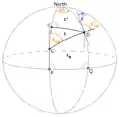



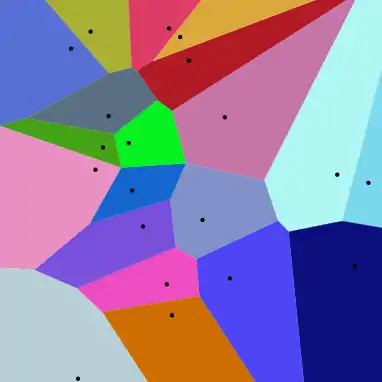

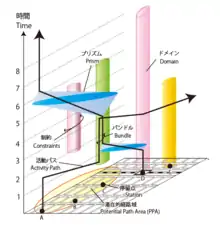
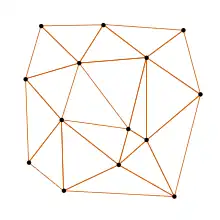

Techniques and tools
- Technical geography employs, and has developed, many techniques and technologies, such as:
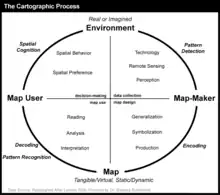

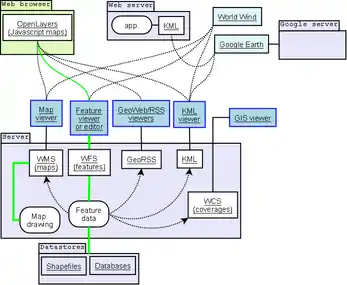
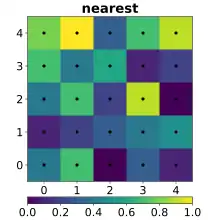




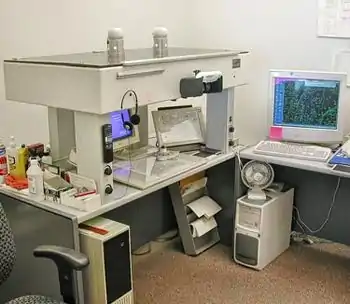



Controversy and criticism
Subdividing any discipline is a difficult matter, and geography is no exception.[3] Geography is very fragmented as a discipline, with a history spanning cultures and thousands of years.[83] Other existing models to subdivide the discipline of geography into categories and focuses, including William Pattison's four traditions of geography, may vary dramatically between publications.[84] While the term technical geography has been put forward as a distinct branch and umbrella for these wider concepts, the terms used to describe the study of spatial information as a distinct category vary.[85] When subdividing the discipline within the literature, similar categories—such as "the Spatial Tradition",[84] "techniques of geographic analysis",[73] "geographic information and analysis",[86] "geographic information technology",[74] "geography methods and techniques",[87] "geographic information technology",[74] "scientific geography,"[88][89] and "quantitative geography"[90][91]—are used to describe the same, or similar, concepts as technical geography.[3][85] Some of the discrepancy in terminology is due to different cultures and languages having their own method of organization; for example, the term "information geography" is popular in research from China to describe similar concepts.[85] It is closely associated with and sometimes used interchangeably with, the subfields of geographic information science and geoinformatics.[68][92][50] Each term has slightly differing definitions and scopes, and the best word choice has been debated in the literature since at least the 1700s when Cave defended the use of technical geography over practical geography.[7] However, many of these alternative terms or phrases are "grammatically awkward" and do not link the discipline explicitly as a branch of geography in the same way as technical geography.[86] Ultimately, the word choice is semantical, but the decision to use different terms for the same concept is one of many contributing factors to the term technical geography having less supporting literature than human or physical geography.
More controversially, others deny the idea that the thought and techniques of geography constitute a new branch. This argument asserts that geography must be applied and, therefore, must focus on some subset of human or physical geography.[93] They also argue that there is not enough well-established peer-reviewed literature to back the term as a new branch.[93]
Some have brought allegations that technical geography has introduced gender bias into geography departments as the discipline is disproportionately practiced by men and seen by some as more masculine.[68][94]
Publications
- Annals of the American Association of Geographers
- Applied Geography
- The Professional Geographer
- Geographical Bulletin
- Geographia Technica – journal focused exclusively on technical geography
- ISPRS International Journal of Geo-Information
- Journal of Maps
- Remote Sensing of Environment
Academic programs
Many academic institutions use, or have historically used, the term "technical geography" to either sub-divide their department or describe courses and content offered within their department. These include, but are not limited to:
- Babeș-Bolyai University[81]
- California State University, Long Beach[95]
- Century College[96]
- College of DuPage[97]
- Everett Community College[98]
- Grossmont College[99]
- Jacksonville University[100]
- Oregon State University[22]
- South Dakota State University[79]
- Southern Utah University[101]
- Tennessee State University[102]
- University of Mary Washington[103]
- University of Maryland[78]
- University of South Alabama[104][105]
- Portland Community College[80]
- Weber State University[106]
Influential geographers
- Anne Kelly Knowles (Born 1957) – influential in the use of GIS and geographic methods in History.
- Arthur Getis (1934–2022) – influential in spatial statistics
- Dana Tomlin – developer of map algebra
- Cynthia Brewer – cartographic theorist that created the Apache 2.0 licensed web application ColorBrewer
- Ferjan Ormeling Jr. (born 1942) – Dutch cartographer who wrote the UNESCO Encyclopedia of Life Support Systems chapter on Technical Geography.[55]
- Gerardus Mercator (1512–1594) – a cartographer who produced the Mercator projection
- George F. Jenks (1916–1996) – influential in computer cartography and thematic mapping
- Ibn al-Faqih (fl. 902) – Wrote Kitab al-Buldan (Ya'qubi book).[16]
- Keith C. Clarke (born 1955) – prominent and heavily cited author in computer cartography and spatial analysis.
- Mark Monmonier (born 1943) – cartographic theorist that wrote numerous books contributing to geographic information systems
- Mei-Po Kwan (born 1962) – geographer that coined the uncertain geographic context problem and the neighborhood effect averaging problem.
- Michael DeMers (born 1951) – geographer that wrote numerous books contributing to geographic information systems
- Michael Frank Goodchild (born 1944) – GIS scholar and winner of the RGS founder's medal in 2003
- Roger Tomlinson (1933–2014) – the primary originator of modern geographic information systems
- Stan Openshaw (1946–2022) – influential British geographer in the use of computer-based/computational geography
- Waldo Tobler (1930–2018) – coined the first and second law of geography
See also
- Areography (geography of Mars) – Delineation and characterization of Martian regions
- Concepts and Techniques in Modern Geography – Series of geography publications
- Map communication model
- Neogeography – Amateur-focused geography
- Neighborhood effect averaging problem – Source of statistical bias
- Planetary science – Science of planets and planetary systems
- Scientific Geography Series – Series of geography publications
- Uncertain geographic context problem – Source of statistical bias
- Technical communication – Field of communication of technical information
- Technical drawing – Creation of standards and the technical drawings
- Technical writing – Type of written communication
Notes
- ↑ While Cave published the "Geography reformed: a new system of general geography, according to an accurate analysis of the science in four parts", how much he wrote or edited is unclear. Other authors are not given within the text.
References
- 1 2 3 4 5 6 7 8 9 10 11 Haidu, Ionel (2016). "What is Technical Geography – a letter from the editor". Geographia Technica. 11: 1–5. doi:10.21163/GT_2016.111.01.
- 1 2 3 4 Sala, Maria (2009). Geography Volume I (1 ed.). Oxford, United Kingdom: EOLSS UNESCO. ISBN 978-1-84826-960-6.
- 1 2 3 4 5 Tambassi, Timothy (2021). The Philosophy of Geo-Ontologies (2 ed.). Springer. ISBN 978-3-030-78144-6.
- ↑ Dada, Anup (December 2022). "The Process of Geomorphology Related to Sub Branches of Physical Geography". Black Sea Journal of Scientific Research. 59 (3): 1–2. doi:10.36962/GBSSJAR/59.3.004 (inactive 1 August 2023).
{{cite journal}}: CS1 maint: DOI inactive as of August 2023 (link) - ↑ Drake, Dawn M.; Elias, Ashley; Ganong, Carissa; Grantham, Michael L.; Mills, Mark S. (May 2022). "Transforming the Applied Learning Experience Through Interdisciplinary Fieldwork" (PDF). The Geographical Bulletin. 63 (2). ISSN 2163-5900. Retrieved 4 August 2023.
- 1 2 3 Sala, Maria (2009). GEOGRAPHY – Vol. I: Geography (PDF). EOLSS UNESCO. Retrieved 30 December 2022.
- 1 2 3 4 5 6 7 8 Cave, Edward (1749). Geography reformed: a new system of general geography, according to an accurate analysis of the science in four parts. The whole illustrated with notes (2 ed.). London: Edward Cave.
- ↑ Lin, Yuancheng; Wang, Min; Lei, Junchao; He, Huiyan (3 August 2023). "Perception and Interaction of Urban Medical Space from the Perspective of Technical Geography: A Case Study of Guangzhou, China". Journal of Urban Planning and Development. 149 (4). doi:10.1061/JUPDDM.UPENG-4432. S2CID 260653708.
- ↑ Arabi, Mouhaman; Ngwa, Moise (March 2019). "Modeling the Relationship Between Weather Parameters and Cholera in the City of Maroua, Far North Region, Cameroon". Geographia Technica. 14(1):1–13 (1): 1–13. doi:10.21163/GT_2019.141.01.
- ↑ Boehm, Richard G.; Peters, Samantha (2008). Careers/Jobs in Geography:Business Cards of Department Graduates (PDF) (sixth ed.). Texas State University San Marcos. Retrieved 8 November 2023.
- ↑ Kretzschmar Jr., William A. (24 October 2013). Schlüter, Julia; Krug, Manfred (eds.). Research Methods in Language Variation and Change: Computer mapping of language data. Cambridge University Press. p. 53. ISBN 9781107469846.
- 1 2 3 4 5 Monmonier, Mark (1985). Technological Transition in Cartography (1 ed.). Univ of Wisconsin. ISBN 0299100707.
- ↑ Chilès, Jean-Paul; Desassis, Nicolas (2018). "29 Fifty Years of Kriging". In Sagar, B. S. Daya; Agterberg, Frits; Cheng, Qiuming (eds.). Handbook of Mathematical Geosciences. SpringerOpen. p. 589. ISBN 978-3-319-78998-9.
- ↑ Holler, Joseph (2019). "Human Geography with Open Gis as a Transformative Introductory Higher Education Course". The International Archives of the Photogrammetry, Remote Sensing and Spatial Information Sciences. 4214: 99–106. Bibcode:2019ISPAr4214...99H. doi:10.5194/isprs-archives-XLII-4-W14-99-2019.
- ↑ Sitwell, O.F.G. (1993). Four Centuries of Special Geography. Vancouver, BC: UBCPress. p. 242. ISBN 0-7748-0444-0. Retrieved 4 January 2024.
- 1 2 Scheiner, Jens; Toral, Isabel (28 Jul 2022). Baghdād: From Its Beginnings to the 14th Century. p. 804. ISBN 978-90-04-51337-2. Retrieved 14 December 2023.
- 1 2 3 Martin, Lawrence (1930). "The Michigan-Wisconsin Boundary Case in the Supreme Court of the United States, 1923–26". Annals of the Association of American Geographers. 20 (3): 105–163. doi:10.2307/2560596. JSTOR 2560596. Retrieved 1 February 2023.
- ↑ "Art of Teaching". School and Home Education. 9 (1): 108. September 1889. Retrieved 4 January 2024.
- ↑ Holdich, T. H. (1902). "The progress of geographical knowledge". Scottish Geographical Magazine. 18 (10): 505–525. doi:10.1080/00369220208733393. Retrieved 1 February 2023.
- 1 2 Hubbard, George D. (1908). "College Geography". Educational Review: 381–400. Retrieved 4 January 2024.
- ↑ A Secondary Schoolmaster (1917). "A Reform School". The English Review. 64 (7): 331–337. ProQuest 2421484. Retrieved 1 February 2023.
- 1 2 Jensen, J. Granville (1990). "Geography at Oregon State University". Association of Pacific Coast Geographers Yearbook (PDF). pp. 153–164. Retrieved 29 September 2023.
- ↑ "The 'Quantitative Revolution'", GG3012(NS) Lecture 4, University of Aberdeen, 2011, webpage:AB12.
- ↑ Gregory, Derek; Johnston, Ron; Pratt, Geraldine; Watts, Michael J.; Whatmore, Sarah (2009). The Dictionary of Human Geography (5th ed.). US & UK: Wiley-Blackwell. pp. 611–12.
- 1 2 Jenks, George (1953). "An Improved Curriculum for Cartographic Training at the College and University Level". Annals of the Association of American Geographers. 43 (4): 317–331. doi:10.2307/2560899. JSTOR 2560899. Retrieved 30 January 2023.
- 1 2 Ackerman, E.A. (1945). "Geographic training, wartime research, and immediate professional objectives". Annals of the Association of American Geographers. 35 (4): 121–43. doi:10.1080/00045604509357271.--as cited in Johnston, Ron and Sideway James (2016). Geography and Geographers: Anglo-American Human Geography since 1945 (7th ed). New York: Routledge.
- ↑ Honeybone, R. C.; Sugden, J. C. G; Wallace, W. (1958). "Geography and Technical Education". The Geographical Journal. 124 (2): 232–234. Bibcode:1958GeogJ.124..232.. doi:10.2307/1790251. JSTOR 1790251. Retrieved 30 December 2022.
- ↑ Hartshorne, Richard (1954). "Comment on 'Exceptionalism in geography'". Annals of the Association of American Geographers. 38 (1): 108–9. doi:10.2307/2561120. JSTOR 2561120.--as cited in Johnston, Ron and Sideway James (2016). Geography and Geographers: Anglo-American Human Geography since 1945 (7th ed). New York: Routledge.
- ↑ Hartshorne, Richard (1955). "'Exceptionalism in Geography' re-examined". Annals of the Association of American Geographers. 45: 205–44. doi:10.1111/j.1467-8306.1955.tb01671.x.--as cited in Johnston, Ron and Sideway James (2016). Geography and Geographers: Anglo-American Human Geography since 1945 (7th ed). New York: Routledge.
- ↑ Hartshorne, Richard (1958). "The concept of geography as a science of space from Kant and Humboldt to Hettner". Annals of the Association of American Geographers. 48 (2): 97–108. doi:10.1111/j.1467-8306.1958.tb01562.x.--as cited in Johnston, Ron and Sideway James (2016). Geography and Geographers: Anglo-American Human Geography since 1945 (7th ed). New York: Routledge.
- ↑ Hartshorne, Richard (1959). Perspective on the Nature of Geography. Chicago: Rand McNally.--as cited in Johnston, Ron and Sideway James (2016). Geography and Geographers: Anglo-American Human Geography since 1945 (7th ed). New York: Routledge.
- 1 2 Crampton, Jeremy W.; Krygier, John (2005). "An Introduction to Critical Cartography". ACME: An International Journal for Critical Geographies. 4 (1). Retrieved 30 January 2023.
- ↑ Johnston, Ron; Sidaway, James (2016). Geography & Geographers: Anglo-American Human Geography since 1945 (7th ed.). New York: Routledge. pp. 64–76.
- ↑ Gregory, Derek; Johnston, Ron; Pratt, Geraldine; Watts, Michael J.; Whatmore, Robert (2009). The Dictionary of Human Geography (5th ed.). USA & UK: Wiley-Blackwell. pp. 611–12.
- ↑ Baker, Robert (2009). Geography Volume I: Modeling Geographic Systems and Prediction (1 ed.). Oxford, United Kingdom: EOLSS UNESCO. ISBN 978-1-84826-960-6.
- ↑ DeLyser, Dydia; Herbert, Steve; Aitken, Stuart; Crang, Mike; McDowell, Linda (November 2009). The SAGE Handbook of Qualitative Geography (1 ed.). SAGE Publications. ISBN 9781412919913. Retrieved 27 April 2023.
- ↑ Walker, Robert Toovey (28 Apr 2021). "Geography, Von Thünen, and Tobler's first law: Tracing the evolution of a concept". Geographical Review. 112 (4): 591–607. doi:10.1080/00167428.2021.1906670. S2CID 233620037.
- 1 2 Tobler, Waldo (1970). "A Computer Movie Simulating Urban Growth in the Detroit Region" (PDF). Economic Geography. 46: 234–240. doi:10.2307/143141. JSTOR 143141. S2CID 34085823. Archived from the original (PDF) on 8 March 2019. Retrieved 22 July 2022.
- 1 2 3 Tobler, Waldo (2004). "On the First Law of Geography: A Reply". Annals of the Association of American Geographers. 94 (2): 304–310. doi:10.1111/j.1467-8306.2004.09402009.x. S2CID 33201684. Retrieved 10 March 2022.
- 1 2 3 Goodchild, Michael (2004). "The Validity and Usefulness of Laws in Geographic Information Science and Geography". Annals of the Association of American Geographers. 94 (2): 300–303. doi:10.1111/j.1467-8306.2004.09402008.x. S2CID 17912938.
- ↑ Arbia, Giuseppe; Benedetti, R.; Espa, G. (1996). ""Effects of MAUP on image classification"". Journal of Geographical Systems. 3: 123–141.
- ↑ Smith, Peter (2005). "The laws of geography". Teaching Geography. 30 (3): 150.
- 1 2 3 4 5 Fotheringham, A. Stewart; Brunsdon, Chris; Charlton, Martin (2000). Quantitative Geography: Perspectives on Spatial Data Analysis. Sage Publications Ltd. ISBN 978-0-7619-5948-9.
- ↑ Murakami, Daisuke; Yamagata, Yoshiki (2020). "Chapter Six – Models in quantitative geography". Spatial Analysis Using Big Data: Methods and Urban Applications. pp. 159–178. doi:10.1016/B978-0-12-813127-5.00006-0. ISBN 9780128131275. S2CID 213700891. Retrieved 3 February 2023.
- ↑ Haggett, Peter (16 July 2008). "The Local Shape of Revolution: Reflections on Quantitative Geography at Cambridge in the 1950s and 1960s". Geographical Analysis. 40 (3): 336–352. Bibcode:2008GeoAn..40..336H. doi:10.1111/j.1538-4632.2008.00731.x. Retrieved 3 February 2023.
- ↑ Juuso, Ilkka; Kretzschmar Jr., William A. (January 2016). "Creation of Regions for Dialect Features Using a Cellular Automaton". Journal of English Linguistics. 44 (1): 4–33. doi:10.1177/0075424215620279. S2CID 130940338. Retrieved 7 January 2023.
- ↑ ISO/TR 19122:2004(en) Geographic information/Geomatics — Qualification and certification of personnel
- 1 2 3 4 5 6 7 8 Krawczyk, Artur (9 November 2022). "Proposal of Redefinition of the Terms Geomatics and Geoinformatics on the Basis of Terminological Postulates". International Journal of Geoinformation. 11 (11): Krawczyk. Bibcode:2022IJGI...11..557K. doi:10.3390/ijgi11110557.
- ↑ DeMers, Michael (2009). Fundamentals of Geographic Information Systems (4th ed.). John Wiley & Sons, inc. ISBN 978-0-470-12906-7.
- 1 2 3 Bello, Innocent E. (October 2023). "Critical Issues in the Methods of Data Collection in Geoinformatics and Environmental Sciences". International Journal of Social Sciences and Management Research. 9 (8): 18–28. doi:10.56201/ijssmr.v9.no8.2023.pg18.28.
- ↑ Duckham, Matt; Goodchild, Michael F.; Worboys, Michael (2004-11-23). Foundations of Geographic Information Science. CRC Press. p. 4. ISBN 9780203009543.
- 1 2 3 Goodchild, Michael F (2010). "Twenty years of progress: GIScience in 2010". Journal of Spatial Information Science (1). doi:10.5311/JOSIS.2010.1.2.
- ↑ "History". University Consortium for Geographic Information Science. Retrieved 8 January 2024.
- 1 2 3 DiBiase, David; DeMers, Michael; Johnson, Ann; Kemp, Karen; Luck, Ann Taylor; Plewe, Brandon; Wentz, Elizabeth (2006). Geographic information science and technology body of knowledge. Association of American Geographers. ISBN 978-0-89291-267-4.
- 1 2 3 Ormeling, Ferjan (2009). GEOGRAPHY – Vol. II: Technical Geography Core concepts in the mapping sciences (PDF). EOLSS UNESCO. p. 482. ISBN 978-1-84826-960-6.
- 1 2 Bagley, James (1941). Aerophotography and Aerosurverying (1st ed.). York, PA: The Maple Press Company.
- ↑ Walker, F. (1953). Geography from the Air (1 ed.). London: Methuen & Co. LTD.
- 1 2 Jensen, John (2016). Introductory digital image processing: a remote sensing perspective. Glenview, IL: Pearson Education, Inc. p. 623. ISBN 978-0-13-405816-0.
- ↑ Tobler, Waldo (1959). "Automation and Cartography". Geographical Review. 49 (4): 526–534. Bibcode:1959GeoRv..49..526T. doi:10.2307/212211. JSTOR 212211. Retrieved 10 March 2022.
- ↑ Fitzgerald, Joseph H. "Map Printing Methods". Archived from the original on 4 June 2007. Retrieved 9 June 2007.
- ↑ "The 50th Anniversary of GIS". ESRI. Retrieved 18 April 2013.
- ↑ St. Martin, Kevin; Wing, John (2007). "The Discourse and Discipline of GIS". Cartographica. 42 (3): 235–248. doi:10.3138/carto.42.3.235.
- 1 2 Openshaw, Stan (May 1991). "A View on the GIS Crisis in Geography, or, Using GIS to Put Humpty-Dumpty Back Together Again". Environment and Planning A: Economy and Space. 23 (5): 621–628. Bibcode:1991EnPlA..23..621O. doi:10.1068/a230621. S2CID 131571153.
- ↑ Hegarty, Christopher J.; Chatre, Eric (December 2008). "Evolution of the Global Navigation satellite system (GNSS)". Proceedings of the IEEE. 96 (12): 1902–1917. doi:10.1109/JPROC.2008.2006090. S2CID 838848.
- ↑ Dardanelli, Gino; Lo Brutto, Mauro; Pipitone, Claudia (2020). "GNSS CORS Network of the University of Palermo: Design and First Analysis of Data". Geographia Technica. 15 (1): 43–69. doi:10.21163/GT_2020.151.05. hdl:10447/401186. S2CID 215889035.
- ↑ Castree, Noel (2000). "Professionalisation, Activism, and the University: Whither 'Critical Geography'?". Environment and Planning A. 32 (6): 955–970. Bibcode:2000EnPlA..32..955C. doi:10.1068/a3263.
- ↑ Peet, Richard (2000). "Celebrating Thirty Years of Radical Geography". Environment and Planning A. 32 (6): 951–953. Bibcode:2000EnPlA..32..951P. doi:10.1068/a32202. S2CID 128738768.
- 1 2 3 Schuurman, Nadine (28 June 2008). "Women and technology in geography: a cyborg manifesto for GIS". Canadian Geographer. 46 (3): 258–265. doi:10.1111/j.1541-0064.2002.tb00748.x. Retrieved 7 January 2023.
- ↑ Tuan, Yi-Fu (1991). "A View of Geography". Geographical Review. 81 (1): 99–107. Bibcode:1991GeoRv..81...99T. doi:10.2307/215179. JSTOR 215179. Retrieved 5 January 2023.
- ↑ Melgaço, Lucas; Prouse, Carolyn (2017). "Milton Santos and the Centrality of the Periphery". In Melgaço, Lucas; Prouse, Carolyn; Brauch, Hans Günter (eds.). Milton Santos: A Pioneer in Critical Geography from the Global South (1 ed.). Springer. pp. 5–10. ISBN 978-3-319-53825-9.
- ↑ Hepple, L. (1998). "Context, Social Construction and Statistics: Regression, Social Science and Human geography". Environment and Planning A. 30 (2): 225–234. Bibcode:1998EnPlA..30..225H. doi:10.1068/a300225. S2CID 144335512.
- 1 2 Graf, W. (1998). "Why Physical Geographers Whine so Much". The Association of American Geographers' Newsletter. 33 (8).
- 1 2 Getis, Arthur; Bjelland, Mark; Getis, Victoria (2018). Introduction to Geography (15 ed.). McGraw Hill. ISBN 978-1-259-57000-1.
- 1 2 3 Dahlman, Carl; Renwick, William (2013). Introduction to Geography: People, Places & Environment (6th ed.). Pearson. ISBN 978-0321843333.
- ↑ "Geographia Technica Volume 1" (PDF). Geographia Technica. 1 (2). 2006. Retrieved 1 January 2023.
- ↑ "Technical Geography – an International Journal for the progress of Scientific Geography: Aims and Scopes". Geographia Technica. "Geographia Technica" Association. Retrieved 1 January 2023.
- ↑ National Research Council (1997). Rediscovering Geography: New Relevance for Science and Society (1997). Washington, DC: The National Academies Press. p. 259. ISBN 978-0-309-05199-6. Retrieved 21 May 2023.
- 1 2 "Department of Geographical Sciences: Course list". University of Maryland. Retrieved 28 January 2023.
- 1 2 "Geography and Geospatial Sciences: Undergraduate Program – Geography". South Dakota State University. Retrieved 28 January 2023.
- 1 2 "Technical Geography Courses". Portland Community college. Retrieved 28 January 2023.
- 1 2 Man, Titus. "Faculty of Geography". Babeș-Bolyai University. Retrieved 5 July 2023.
- ↑ Lemmens, Mathias (April 2001). "Education: Surveying the Issues". Surveying World: 36–38.
- ↑ D'Alessandro-Scarpari, Cristina; Elmes, Gregory; Miller, Jennifer; Weiner, Daniel (2016). "Book Review: Geography and technology". Progress in Human Geography. 30 (5): 675–677. doi:10.1177/0309132506070191. S2CID 128681685.
- 1 2 Pattison, William (1964). "The Four Traditions of Geography". Journal of Geography. 63 (5): 211–216. Bibcode:1964JGeog..63..211P. doi:10.1080/00221346408985265. Retrieved 27 August 2022.
- 1 2 3 Li, Xin; Zheng, Donghai; Feng, Min; Chen, Fahu (November 2021). "Information geography: The information revolution reshapes geography". Science China Earth Sciences. 65 (2): 379–382. doi:10.1007/s11430-021-9857-5. S2CID 243866306.
- 1 2 Mark, David (2003). Foundations of geographic information science. London and New York: Taylor & Francis. ISBN 0-203-00954-1.
- ↑ Fundamentals of Physical Geography: Geography as a Discipline (1 ed.). New Delhi: National Council of Educational Research and Training. 2006. pp. 1–12. ISBN 81-7450-518-0.
- ↑ Bamford, C. G; Robinson, H. (1986). Scientific and Technical Geography of the European Economic Community. Prentice Hall Press. ISBN 0582988845.
- ↑ Gatrell, A C; Bracken, I J (1985). "Reviews: Central Place Theory, Gravity and Spatial Interaction Models, Industrial Location, Scientific Geography Series, Computer-Assisted Cartography: Principles and Prospects". Environment and Planning B: Urban Analytics and City Science. 12 (4): 493–496. Bibcode:1985EnPlB..12..493G. doi:10.1068/b120493. S2CID 131269013.
- ↑ A. Stewart, Fotheringham (May 2, 2000). Quantitative Geography: Perspectives on Spatial Data Analysis (1 ed.). SAGE Publications Ltd. ISBN 0761959483.
- ↑ Couclelis, Helen (March 2017). "Ontology: Theoretical Perspectives". International Encyclopedia of Geography: People, the Earth, Environment and Technology: 1–11. doi:10.1002/9781118786352.wbieg0680. ISBN 9780470659632.
- ↑ Lake, Ron; Burggraf, David; Trninic, Milan; Rae, Laurie (2004). Geography Mark-Up Language: Foundation for the Geo-Web (1 ed.). John Wiley and Sons Inc. ISBN 0-470-87154-7.
- 1 2 Collins, Eric. "What is the Difference Between Geomatics and Geography?". Geomatics Canada. Retrieved 7 January 2024.
- ↑ Pujol, Hermínia; Ramon, M. Dolors Garcia; Ortiz, Anna (2012). "ACADEMIC CAREERS IN SPANISH GEO". Boletín de la Asociación de Geógrafos Españoles. 59: 465–467.
- ↑ "Department of Geography". California State University, Long Beach, Geography, Archive. Retrieved 29 September 2023.
- ↑ "Geography". Century College. Retrieved 29 September 2023.
- ↑ "Geography Program: Degrees". College of DuPage. Retrieved 11 October 2023.
- ↑ "Geography". Everett Community College. Retrieved 11 October 2023.
- ↑ "Careers in Geography". Grossmont College. Retrieved 11 October 2023.
- ↑ "Environmental Planning: Available Minors". Jacksonville University. Retrieved 25 November 2023.
- ↑ "Geography at SUU". Southern Utah University. Retrieved 29 September 2023.
- ↑ "Geography Minor". Tennessee State University. Retrieved 29 September 2023.
- ↑ "Geography". University of Mary Washington. Retrieved 29 September 2023.
- ↑ "Geography Advising Guide". University of Southern Alabama. Retrieved 29 September 2023.
- ↑ "GEO Curriculum". University of Southern Alabama. Retrieved 29 September 2023.
- ↑ "Geography". Weber State University. Retrieved 29 September 2023.